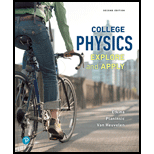
25.4 and 25.5 Frequency, wavelength, and the
& Light from an incandescent bulb Only about
Want to see the full answer?
Check out a sample textbook solution
Chapter 25 Solutions
College Physics
Additional Science Textbook Solutions
Physics for Scientists and Engineers with Modern Physics
Conceptual Integrated Science
Physics: Principles with Applications
Life in the Universe (4th Edition)
College Physics: A Strategic Approach (3rd Edition)
- With respect to the electromagnetic spectrum we can say that: Select one: a. None of the above is correct b. It includes both the radioelectric spectrum and the optical spectrum. c. Understand the optical spectrum d. It only considers the radioelectric spectrumarrow_forwardthe Electromagnetic spectri your answer for numbers 1-7 from the box. E www. X-ray radio wave 1. A 2. B 3. C 4. D 5. E gamma ray microwave ultraviolet infrared visible light 6. F 7. G 8. What letter shows the lowest frequency? 9. What letter shows the shortest wavelength? 10. What letter shows the EM wave with the highest energy?.arrow_forwardFill the blank spaces for the list of properties of the Electromagnetic waves given below: 1) EM waves are produced by 2) in EM waves, E.B and the wave direction are mutually 3) In the spectrum of electromagnetic waves, have the lowest frequency. 4) Of the seven different EM waves. : is used in radars. stationary charges mechanical accelerated charges parallel visible light A. B. C and D are having refractive microwave 1.46 respectively. The medium in which the light willtr fastest is radio waves longitudinal a. D perpendicular O b. A gamma rayarrow_forward
- 6. The solar emission spectrum shown to the right is broad, meaning light is emitted over the Solar Emission Spectrum 4500 4000 entire visible region of the electromagnetic spectrum, but it also has "dips" in the intensity. Search the web for "Fraunhofer 3500 3000 2500 2000 1500 1000 500 lines" and describe the cause of these "dips" in intensity. What specifically is the cause of the large "dip" at -760 nm? 200 400 600 800 1000 Wavelength (nm) Intensityarrow_forwardA local radio station broadcasts radio waves at 99.7 MHz. Unlike sound, radio waves can pass into outer space, because they are disturbances not in air molecules but in the e-m fields that exist even in the vacuum of space. It's energy traveling independent of matter. a. When that radio wave hits you, how many pulses (wave crests) of em radiation hit you per minute (60 seconds)? (reminder: M = 10 6) b. Radio waves move at the speed of light (c), how far apart is each wave crest (wavelength)? c. If we boosted the signal strength so that station could be heard on the moon, would either the wavelength or frequency change?arrow_forwardActivity 1: CHECK YOUR UNDERSTANDING Directions: Write True if the statement is correct, and False if it is not. 1.Absorption of light happens when the light energy emitted has the same frequency as the object's natural frequency. 2. You can see the color of all kinds of waves along the electromagnetic spectrum. 3. Visible light makes up a part of the electromagnetic spectrum. 4.Infrared waves have higher frequencies than visible light. 5.Light is an electromagnetic wave. 6. A light-year is the distance that light travels in a year. 7. All materials have the same natural frequencies. 8.Pigments selectively absorb certain frequencies of light so you can use them to color objects. 9.Rainbows appear only after a rainstorm if the weather is hot. 10. A transparent object will reflect the light that it does not absorb. 11.Refracted light travels in a straight line. 12. A transparent object will transmit the light that is does not absorb. 13. Rainbows are formed due to Tyndall scattering. 14.…arrow_forward
- Help mearrow_forwardThe electromagnetic waves that carry FM radio range in frequency from 87.9 MHz to 107.9 MHz. What is the range of wavelengths of these radio waves?A. 500–750 nm B. 0.87–91.08 mC. 2.78–3.41 m D. 278–341 mE. 234–410 kmarrow_forwardThe electromagnetic spectrum ranges from cosmic rays to radio waves. Although we don't look at cosmic rays all too much in this unit, the order from highest to lowest energy in the sections of the EM spectrum are named: gamma rays, X-rays, ultraviolet radiation, visible light, infrared radiation, mierowaves, and radio waves, For 3 sections of the EM spectrum, name 1-2 examples that can be used in our lives. We have provided an example down below. EM Spectrum Sections Examples Cosmic Rays Gamma Rays X-rays Ultraviolet Radiation Visible Light Our Sun Glowsticks Infrared Radiation Microwaves Radio Wavesarrow_forward
- By using antenna rods of several different lengths, the antenna shown is designed to pick up signals across a broad frequency range. The highestfrequency it can pick up is 32 MHz. What is approximately the lowest frequency it can efficiently detect?A. 120 MHzB. 80 MHzC. 50 MHzD. 25 MHzE. 12 MHzarrow_forwardActivity 2: Application Using the space provided below, look for a photo or take a photo where you can find applications of EM waves in real-life. Make a caption in each photo. Write its relevance, importance, and how will it be of help to humanity. LUS Leonor T. Ararrow_forward5. An EM wave has a frequency of 9.77 x 1014 Hz. What is this wavelength, and how should we classify it in terms of its place in the electromagnetic spectrum? 6. How long does it take light from the moon to reach us? It is 3.8 x 10³ m away.arrow_forward
